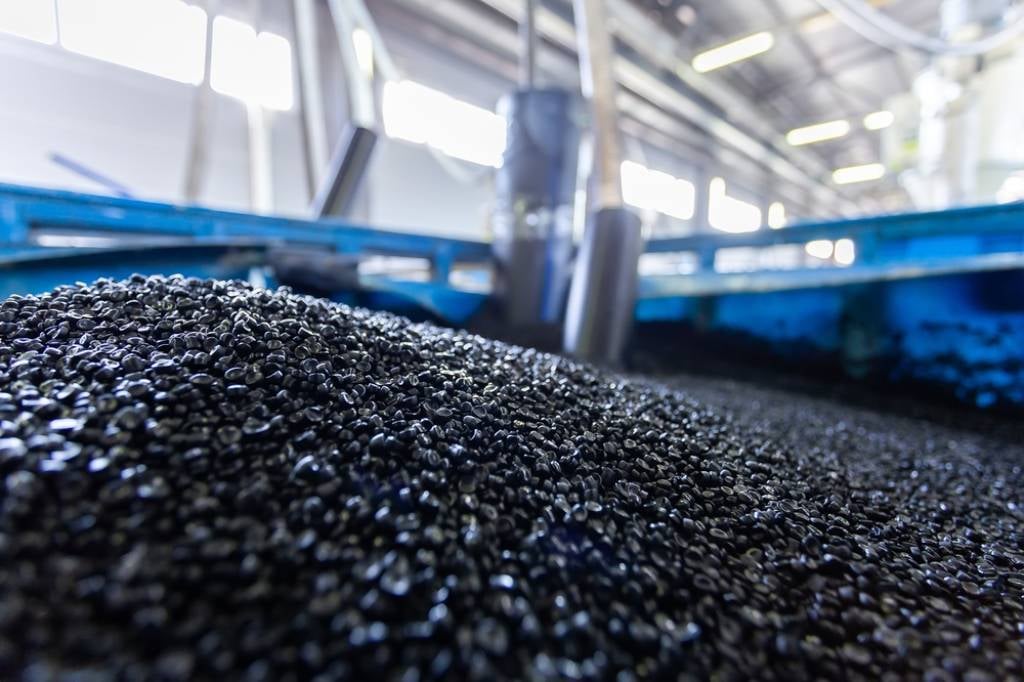
ABS (Acrylonitrile Butadiene Styrene) and Polycarbonate (PC) are two of the most widely used thermoplastics. You might find yourself wondering, “Is ABS better than polycarbonate?” These two types of plastics have their own unique set of properties that make them ideal for specific applications. Here is an in-depth comparison between the two ABS vs polycarbonate.
Chemical Properties
When comparing ABS vs polycarbonate, you need to look at the chemical structure of each type of plastic. ABS plastic is a copolymer made from acrylonitrile, butadiene, and styrene monomers polymerization. Each of these monomers contributes specific properties to the material:
- Acrylonitrile offers chemical resistance and hardness.
- Butadiene contributes toughness and impact strength.
- Styrene provides a shiny, impervious surface.
Polycarbonate, on the other hand, is a polymer derived from the reaction of bisphenol A and phosgene. Polycarbonate sheets are known for their outstanding optical clarity, toughness, and high heat resistance.
Physical Properties
ABS is a plastic type with an opaque nature and a matte finish. It offers excellent impact resistance, particularly at room temperature. Polycarbonate is a versatile material that boasts transparency, perfect for optically clear applications.
Unlike ABS, it has a higher impact resistance, which remains intact even at lower temperatures. Additionally, polycarbonate exhibits exceptional dimensional stability over ABS. This makes polycarbonate a superior choice for strength when comparing polycarbonate vs ABS.
Chemical Resistance
Depending on the preferred application, you need to compare the level of chemical resistance between ABS plastic vs polycarbonate. ABS is known for its resistance to a wide range of substances such as acids, alkalis, alcohols, and salts.
Nevertheless, it can be susceptible to damage when exposed to concentrated sulfuric and nitric acids, ketones, and hydrocarbons. Polycarbonate is highly resistant to mineral acids, many organic acids, oxidizing and reducing agents, and various alcohols. However, it is not resistant to solvents, aromatics, or alkaline substances.
UV Resistance
UV resistance is another factor to consider when comparing ABS vs PC. ABS doesn't hold up well when exposed to UV rays for extended periods. This can lead to discoloration and a decrease in material durability. However, you can enhance its resistance by incorporating UV stabilizers into the mix.
Polycarbonate is naturally UV-resistant and commonly used outdoors with minimal degradation. However, prolonged exposure may cause slight yellowing or hazing if UV stabilizers or coatings are not utilized.
Mechanical Properties
Understanding the differences between ABS vs polycarbonate will help you to understand which is best for your needs. ABS is a material that strikes the perfect balance between rigidity and resilience. It offers excellent durability while also being resistant to scratches, unlike PC. ABS is also preferred for electroplating as additional strength is needed for a mechanical part.
Polycarbonate is a fantastic material with outstanding tensile strength. Unlike many other plastics, it offers higher flexibility and is less brittle. When working with polycarbonate, it's important to handle it with caution due to its susceptibility to scratching.
Cost
Cost is a significant factor to consider when choosing to work with popular materials like ABS vs polycarbonate. ABS typically has a lower price tag compared to Polycarbonate. On the other hand, Polycarbonate tends to be more costly, but its superior properties, particularly in demanding applications, justify the higher expense.
Applications and Usage
Once you understand the intended use for your product, you can determine if you should use ABS material vs polycarbonate. ABS is a versatile material that finds its application in many industries because ABS is a blend of materials to achieve its distinct properties.
It is commonly used in consumer electronics, automotive parts, toys (such as LEGO bricks), and various appliance housings. Additionally, ABS is a popular choice in 3D printing due to its user-friendly nature and excellent post-processing capabilities.
Polycarbonate is also quite versatile and finds application in various industries. It is commonly used for eyeglass lenses, CD/DVDs, bulletproof windows, riot shields, and greenhouses. This is because it offers excellent optical clarity and impact resistance. Additionally, polycarbonate is also preferred for automotive headlights, outdoor lighting fixtures, and other high-temperature-resistant applications where clarity is essential.
Find the Best Material for Your Manufacturing Project
When looking at ABS vs polycarbonate, they offer distinct advantages and are appropriate for various applications. The selection between the two mainly relies on the specific requirements of the application, including factors like strength, transparency, temperature resistance, and budget.
At RCO Engineering, our experts can help you to decide which thermoplastic is best for your application. Let us work with you to solve your manufacturing needs. We offer both low and high-volume manufacturing for various industries including automotive, defense, and aerospace.

Comments